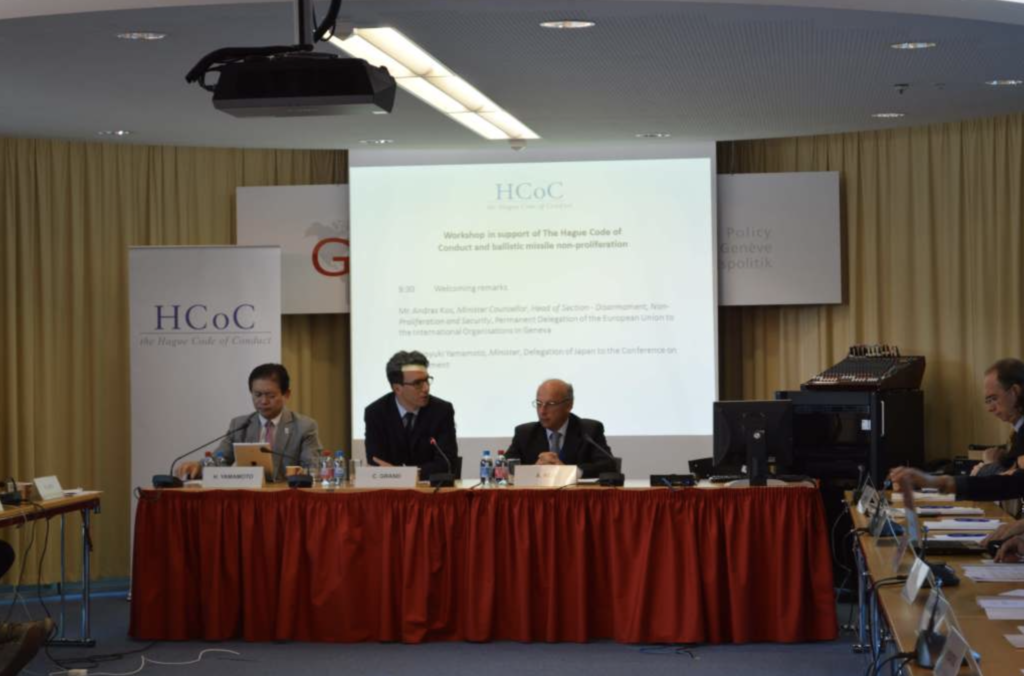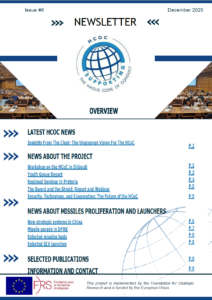Geneva outreach side event on HCoC
4 September 2013
On 4 September 2013, the FRS organised, on behalf of the European Union, an outreach event in support of the HCoC and ballistic missile non-proliferation. This meeting took place at the Geneva Centre for Security Policy.

AGENDA
WELCOMING REMARKS
- Andras KOS, Minister Counsellor, Head of Section – Disarmament, Non-Proliferation and Security, Permanent Delegation of the European Union to the International Organisations in Geneva
- Hiroyuki YAMAMOTO, Minister, Delegation of Japan to the Conference on Disarmament
ROUND TABLE I: CURRENT & FUTURE CHALLENGES IN COMBATING BALLISTIC-MISSILE PROLIFERATION
- Camille GRAND, Director, Foundation for Strategic Research
- Dr. Ian ANTHONY, Director, Programme on Arms Control, Disarmament and Non-Proliferation, Stockholm International Peace Research Institute
ROUND TABLE II: THE HCoC: UNIVERSALITY, IMPLEMENTATION & VISIBILITY
- Lucia MARTA, Researcher, Foundation for Strategic Research
- Dr. Mark SMITH, Programme Director, Defence and Security, Wilton Park


